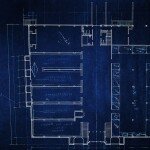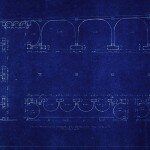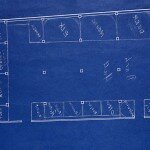Overview
Introduction
In 1940, after years of storing and exhibiting its collection in borrowed or repurposed spaces, the Grand Rapids Public Museum moved into 54 Jefferson, a 30,000 square foot facility, one of the last projects to be funded under the W.P.A. during the Great Depression. Over the next fifty years, 54 Jefferson, with a whale skeleton suspended in its great hall, and mammal dioramas and displays of rocks and minerals, taxidermied birds and other natural history specimens in the adjoining galleries, was visited by nearly every schoolchild in Grand Rapids. In 1994, faced with the deteriorating condition of the building and changing museum standards, the museum relocated to a new facility, leaving dioramas, showcases and exhibits behind. Since that time, 54 Jefferson has been maintained by the museum and the city of Grand Rapids, but has otherwise been largely closed to the public.
Beginning in 2010, the Grand Rapids Public Museum has collaborated with SiTE:LAB, a non-profit that conducts art exhibitions in vacant buildings, on a series of projects in 54 Jefferson. Allowing the public – and particularly those who still remember the space from grade school field trips – to again enter the space has fostered renewed interest in the future of this iconic building. SiTE:LAB is hoping to use that attention to initiate a community driven reexamination of the building’s potential as a public space, and as a first step in that process, is conducting this ideas competition.
The Challenge
We challenge competitors to create compelling visions for the future of this former museum. While not every proposal may be feasible in light of the political, legal and financial obstacles facing the development of any new urban public space, each can raise the community’s awareness of the unique potential of 54 Jefferson to serve Grand Rapids in new and innovative ways.
Objectives
This open one-stage competition seeks proposals for the repurposing of 54 Jefferson that define a vision for the building as a public space. Although proposals are not required to address these issues, they may wish to take into account (1) the extant showcases and dioramas left behind when the museum relocated, and (2) the building’s proximity and potential access to an adjacent facility in which the museum stores the vast majority of its collection that is not on display at any point in time.



